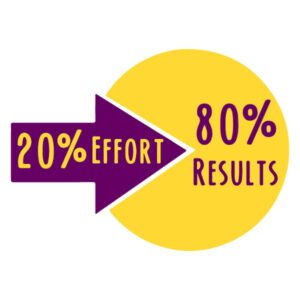Effective leadership can seem daunting in today’s dynamic market, with business leaders finding many takers for their time. A survey conducted across 35,000 organizations found that 77% of the participants complained about a lack of leadership at the helm.
Day-to-day distractions, resolutions for immediate situations, and challenges get prioritized, taking the leadership’s focus away from the big-picture and long-term goals.
Leaders end up with jumbled-up priorities, ineffective communications, lower productivity, higher stress, and a poor work-life balance.
Leaders need to halt and look at the situation in the face – do we prioritize daily battles over long-term growth, or is there a better way to get the best of both worlds?
Business Leaders need to start with minimizing distractions – the ‘n’ number of competing tasks vying for their time.
Sharing a few ways one can achieve that:
Leaders and Founders routinely tend to micromanage getting involved in expanding energy into areas that may not necessarily require their involvement. Business leaders need to see the bigger picture, evaluate what is required to drive the business’s long-term growth and focus on cranking up those. Leaders must delegate to free up their time and focus on clarity of thought for laser-sharp focus.

Adopting the Pareto principle is another way to maximize productivity and reduce distractions.
The Pareto Principle essentially states that 80% of the success of an organization stems from 20% of the efforts, meaning that a small number of cases have an outsized effect. So, for leaders to maximize productivity in an organization, they need to identify the tasks that have the most impact in the day and focus on them first.
US President Dwight Eisenhower famously said, ‘ I have two kinds of problems: the urgent and the important. The urgent are not important, and the important are never urgent. The Eisenhower matrix provides a great tool to prioritize tasks. Good leaders use it as a handy tool when in flux.

Ideally, leaders must prioritize tasks from the first quadrant, schedule tasks from the second task to be completed later, delegate tasks in the third quadrant, and delete the tasks in the fourth quadrant.
Leaders need to identify the three major priorities for the organization’s growth and periodically review them weekly, monthly, and yearly. It ensures that the day-to-day tasks do not take the focus away from the long-term goals while allowing for adjustments to priorities in response to market dynamics.
Business leaders face new issues and challenges daily, which can often be distracting. Founders can combat the ‘noise’ by delegating tasks that are not a priority for the long-term growth of the organization. ” None can do it better than me ” syndrome needs to make way for delegation. Even if employees end up operating at 80% of the owner’s efficiency, they can leverage multiple employees’ overtime to exponentially increase the output, letting them deal with important tasks.
When in doubt, business leaders can focus on prioritizing the crucial aspects of the organization, such as customer engagement, employee engagement, incorporating best practices, etc., required to develop the business or enhance brand equity.
To maximize productivity, business leaders need to focus equally on effective energy management as they do on time management. Multiple agendas pull leaders in different directions taking away the focus from their core strengths, leaving them feeling stretched and ineffective, making them counterproductive. In other words, outsource what is not your core expertise.
Business Leaders want the products and services to be perfect, an impossible vision, as a change in today’s world is the only constant. Why should your product and service not evolve? Products and services evolve as they get fine-tuned to customers’ changing needs and requirements. Being a perfectionist is often a bottleneck in the organization, as it involves constantly restarting product development efforts or customer service, which can lead to a waste of time and resources. Instead, leaders can focus on creating a viable product and improving it gradually as they scale.
Founders who feel disconnected from the big picture in an organization can often end up focusing on short-term tasks, which leads to a cycle of productivity rather than strategy, hampering the organization’s long-term growth. When founders identify and reconnect with the organization’s vision, especially on tasks that can benefit it over the next five or ten years, they establish the right priorities.
Business leaders often get stuck in the quicksand of moving from one crisis to the next losing focus on the long-term vision.
It is, therefore, critical for founders and senior managers to build tools and processes that will reiterate the company vision and long-term goals for them to stay true to the focus.
